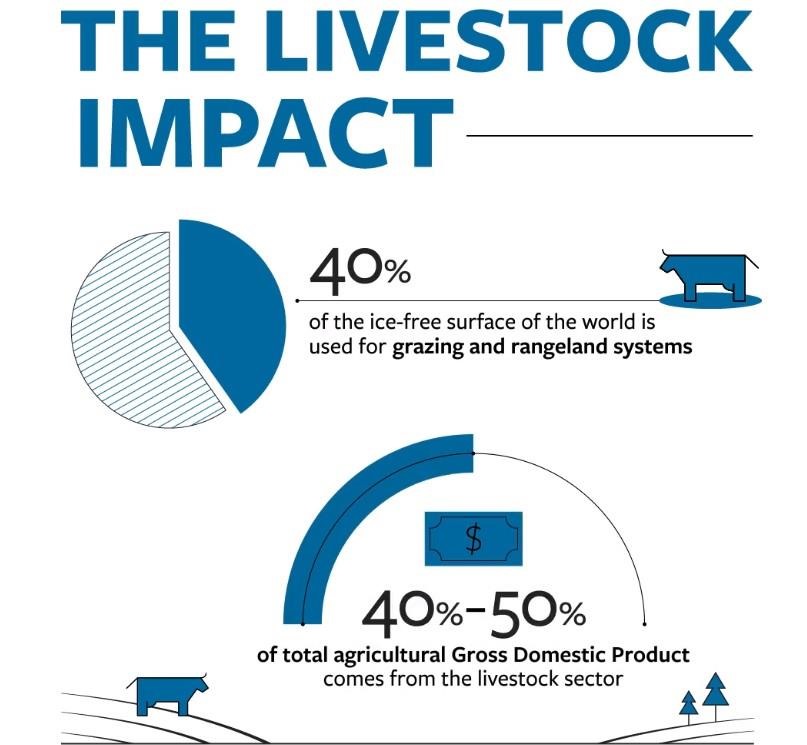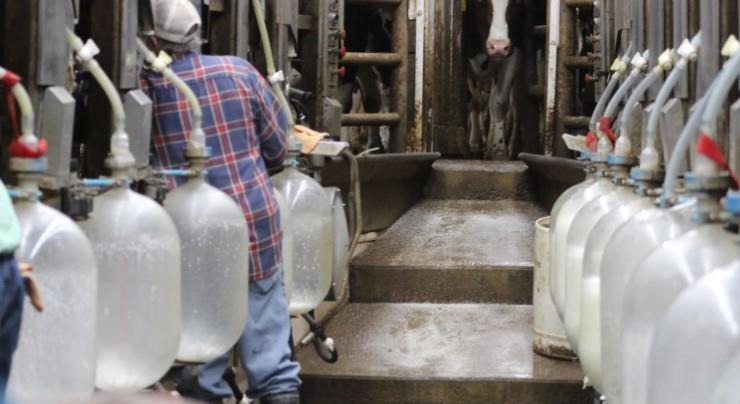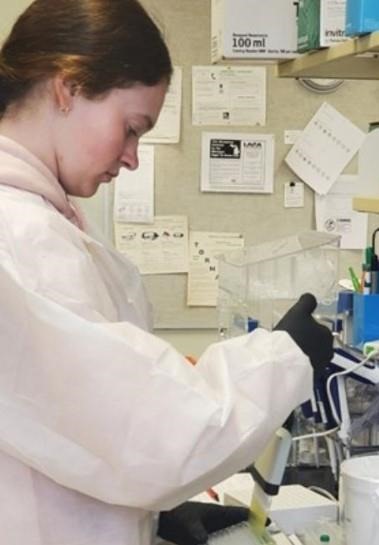Each step in that path from farm to shelf adds value. So while Nash might get $1,000 selling one of his large cows to a neighbor, once it’s sent off to get slaughtered, cut, wrapped, frozen and put on a supermarket shelf, the animal’s total worth is more like $5,500.
That means retailers, shippers and processors receive 80% of the cows’ value – and often those companies are large, out of state, organizations.
“That money can be all captured here,” Nash said. “It could benefit our communities, especially those that have lost logging and timber and mill infrastructure.”

OPB
Ranchers buy and sell cattle at the Intermountain Livestock Exchange in La Grande, Oregon, on Thursday, Jan. 19, 2023.
In practical terms, the current system means that, if Nash or anyone else wants to boost Oregon’s economy by buying local beef, it’s very difficult and requires an expensive work around.
Watching money leave Oregon is hard for Nash – and for regulators. That’s why the Oregon Department of Agriculture has spent $2 million to create a new Oregon meat inspection program – even though the federal government already runs an inspection program. And to process the new state inspected meat, agricultural authorities are trying to increase capacity at Oregon’s small slaughterhouses.
Passage of House Bill 2907 this session would bring in another $10 million for the new program.
Up to now, Oregon has relied on federal meat inspectors with the U.S. Department of Agriculture. But Oregon only has 13 large federal inspected slaughterhouses and 36 counties. So some ranchers have to drive three hours or more, each way, to get their cattle killed and processed.
Todd Nash drives to Nampa, Idaho.
“It’s a full day,” he said. “By the time you load the cattle up, unload them, stop for fuel, you’re 10 hours into it.”

OPB
Head of the Oregon Cattlemen's Association, Todd Nash, delivers $300 worth of feed to cattle on his ranch in Wallowa County on Thursday, Jan. 19, 2023. Retailers, shippers and processors receive 80% of a cows’ value – and often those companies are large, out of state, organizations. “That money can be all captured here,” Nash said. “It could benefit our communities, especially those that have lost logging and timber and mill infrastructure.”
The Oregon agriculture department is taking a two-pronged approach to build the new system. The first is training new state meat inspectors. The second involves helping small slaughterhouses grow so they can handle more capacity.
Bill and Kaleen Oldridge run BillyBob’s Butcher Shop and Stafford’s in Union County. Until recently, they processed a maximum of two animals a day, because there were only two of them and they had minimal equipment. Each animal took several hours’ work. That compares to 1,800 animals a day that are processed at a large federally inspected factory slaughterhouse.
Boosting production at BillyBob’s started with a $400,000 grant from the state, which the Oldridges used to buy new equipment, including a more efficient saw, a new smoker, a briner, packer and a grinder.

OPB
Bill Oldridge of BillyBob's Butchers in Elgin, stands next to a side of beef on Thursday, Jan. 19, 2023. Oldridge said he numbers each side that goes through his plant so people know exactly where their food comes from.
They now process up to 12 animals a day and they’ve hired 10 new employees. The Oldridges are busy putting in all the sanitation and hazard analysis procedures required before they can finally secure a state inspector.
Up to now, each animal to go through BillyBob’s has generally been purchased by a local family from a local rancher. And after the animal is processed, that family is not allowed to sell the meat, because it hasn’t been individually inspected.
Instead, the meat goes to stock the family’s freezer.
Click here to see more...